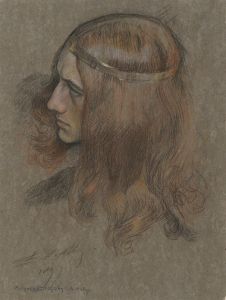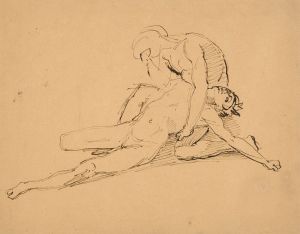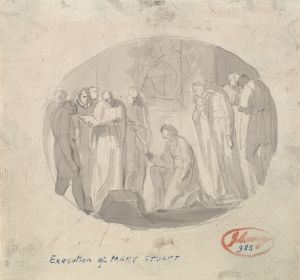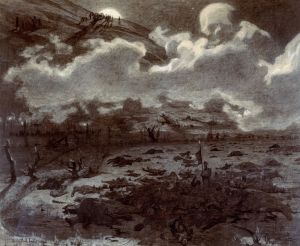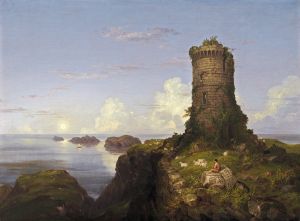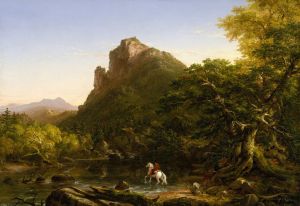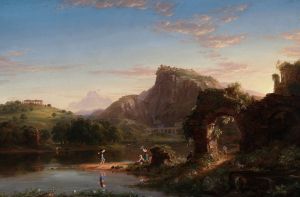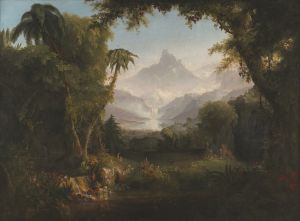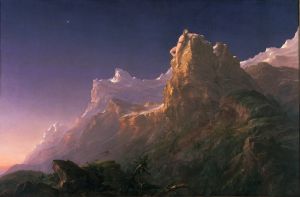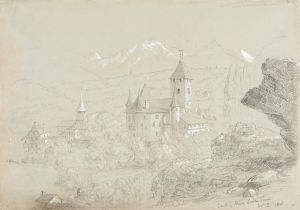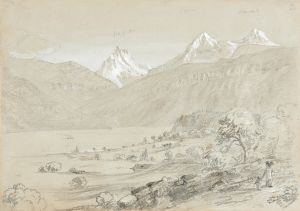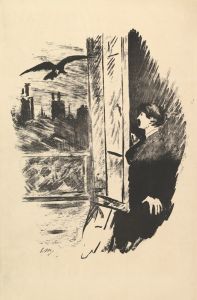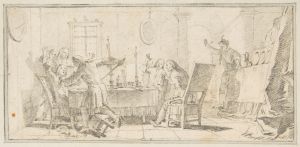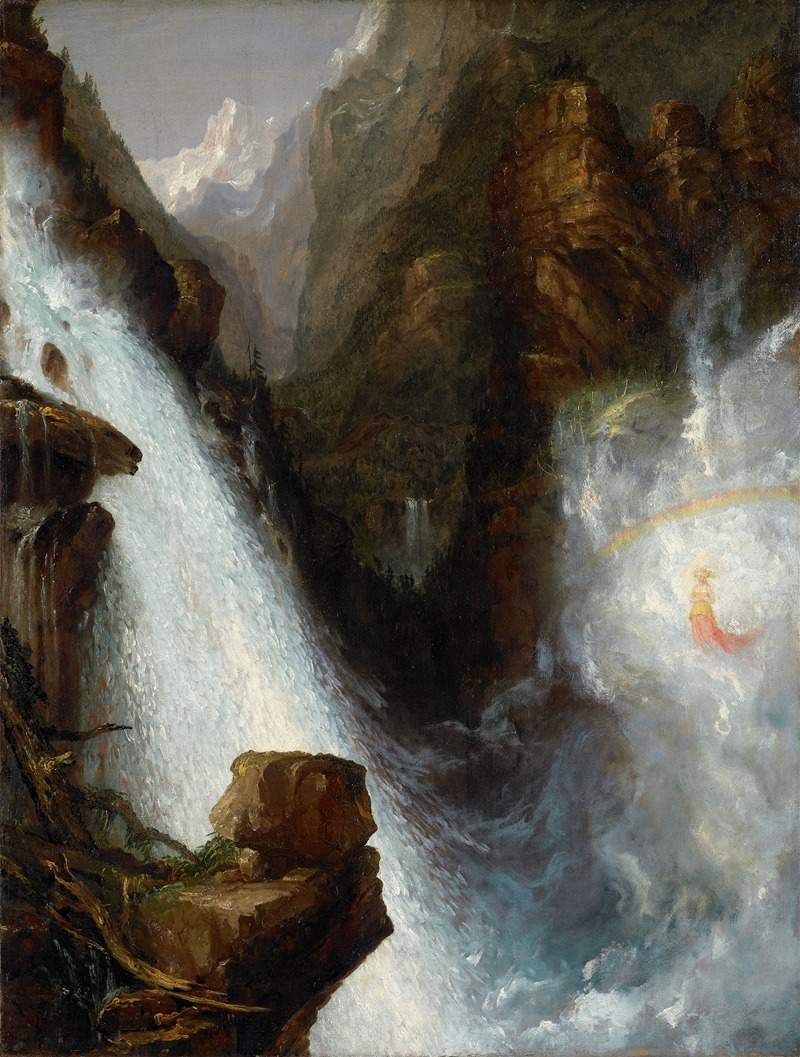
Scene from Byron’s “Manfred”
A hand-painted replica of Thomas Cole’s masterpiece Scene from Byron’s “Manfred”, meticulously crafted by professional artists to capture the true essence of the original. Each piece is created with museum-quality canvas and rare mineral pigments, carefully painted by experienced artists with delicate brushstrokes and rich, layered colors to perfectly recreate the texture of the original artwork. Unlike machine-printed reproductions, this hand-painted version brings the painting to life, infused with the artist’s emotions and skill in every stroke. Whether for personal collection or home decoration, it instantly elevates the artistic atmosphere of any space.
"Scene from Byron’s 'Manfred'" is a painting by the American artist Thomas Cole, completed in 1833. Thomas Cole is recognized as a prominent figure in the Hudson River School, an art movement known for its romantic portrayal of the American landscape. This particular painting is an interpretation of a scene from Lord Byron's dramatic poem "Manfred," which was published in 1817. Byron's work is a complex narrative that combines elements of the supernatural, existential reflection, and the sublime, themes that resonated with the Romantic movement of the 19th century.
The painting captures a moment from the poem where the protagonist, Manfred, is in the Alps, confronting the spirits of nature. Cole's depiction is characterized by its dramatic use of light and shadow, which enhances the emotional intensity of the scene. The landscape is vast and imposing, with towering mountains and a turbulent sky, reflecting the inner turmoil of Manfred. This aligns with the Romantic ideal of the sublime, where nature's grandeur and power evoke both awe and terror.
Thomas Cole's choice to paint a scene from "Manfred" reflects his interest in literature and his ability to translate literary themes into visual art. The painting is a testament to Cole's skill in capturing the essence of Byron's work, emphasizing the themes of isolation, the quest for knowledge, and the struggle against one's inner demons. Cole's use of color and composition draws the viewer into the narrative, inviting them to explore the emotional depth of the scene.
"Scene from Byron’s 'Manfred'" is housed in the Smithsonian American Art Museum, where it remains an important piece within their collection. The painting is a significant example of how American artists of the 19th century were influenced by European literature and art movements, yet they adapted these influences to reflect their unique perspectives and environments.
Thomas Cole's work, including this painting, played a crucial role in shaping the identity of American art during this period. His landscapes often carried moral and philosophical messages, encouraging viewers to reflect on humanity's relationship with nature. In "Scene from Byron’s 'Manfred'," this relationship is depicted through the solitary figure of Manfred, dwarfed by the majestic and indifferent natural world around him.
The painting not only highlights Cole's technical prowess but also his ability to convey complex emotional and intellectual themes through the medium of landscape painting. It stands as a bridge between the literary and visual arts, demonstrating the interconnectedness of different art forms during the Romantic era. Through this work, Cole invites viewers to ponder the profound questions posed by Byron's poem, making it a lasting piece of cultural and artistic significance.





